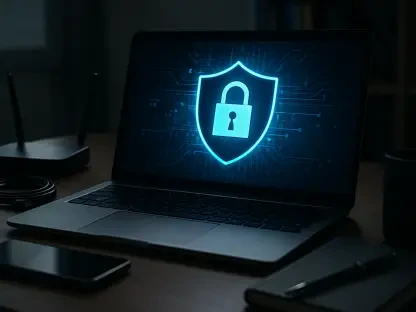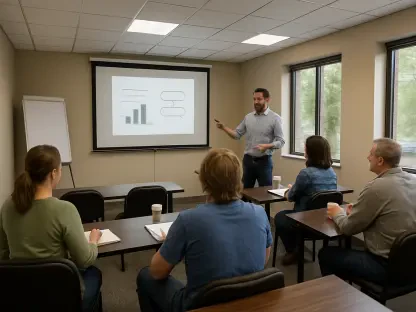The deadline is fast approaching for educational institutions to achieve comprehensive digital accessibility compliance. With the Department of Justice’s final rule on Title II of the Americans with Disabilities Act (ADA) now in effect, public educational institutions face a clear mandate: ensure 100 percent of digital content meets Web Content Accessibility Guidelines (WCAG) 2.1 Level AA standards by April 2026. This requirement marks a pivotal shift in digital accessibility obligations, demanding immediate attention and strategic planning from accessibility leaders and IT teams within educational institutions.
1. Understanding the New Requirements
The final rule brings unprecedented clarity to digital accessibility requirements for public universities and community colleges. Unlike previous guidance, which often left room for interpretation, the new mandate requires WCAG 2.1 Level AA compliance for websites, mobile applications, and digital content. This includes accurate captioning and audio description requirements for all digital media content. Educational institutions must ensure their digital platforms, from learning management systems to public-facing websites, meet these standards.
Key requirements include:
- Pre-recorded video content must include accurate captions.
- Live audio content in synchronized media requires real-time captioning.
- Pre-recorded video must include audio descriptions.
- All digital documents and materials must be accessible to screen readers.
- Web interfaces must be navigable by keyboard.
2. Strategic Planning for Compliance
To effectively meet the updated ADA Title II requirements, educational institutions should follow a structured implementation plan:
Conduct a Comprehensive Audit
Begin by auditing all digital content across your institution’s ecosystem, including websites, learning management systems, digital resources, and multimedia content. Assessing the scope of necessary updates will help prioritize efforts and allocate resources effectively.
Prioritize High-Impact Areas
Focus initial efforts on content with the highest student engagement, such as:
- Core educational materials
- High-traffic administrative resources
- Live-streamed events and recordings
- Student service portals
- Digital library resources
Establish Clear Accessible Content Processes
Create and implement standardized processes to ensure content accessibility, including:
- Guidelines for document and multimedia creation
- Accessibility review and quality assurance protocols
- Regular accessibility audits to maintain standards
Invest in the Right Tools
Select appropriate technology solutions for:
- Accessibility checking
- Caption generation and editing
- Audio description services
- Document remediation tools
3. Looking Beyond Compliance
Meeting the 2026 deadline is crucial, but institutions should view this mandate as an opportunity to enhance the educational experience for all students. Research consistently shows that accessible design benefits the entire student population, not only those with disabilities. Features like captions and transcripts improve comprehension and retention for all learners.
Building accessibility into your digital infrastructure from the ground up is also more cost-effective than retrofitting content. This proactive approach also helps institutions avoid potential legal risks and demonstrates a commitment to inclusive education. Creating an accessible digital environment positions institutions at the forefront of educational innovation. With established accessibility frameworks, institutions can adapt and integrate new tools as technology evolves, gaining a competitive advantage that attracts students who value inclusive learning.
4. Time to Act
Achieving compliance is an iterative process that requires ongoing commitment. With less than two years until the 2026 deadline, institutions must start now. The scope of work required to achieve full compliance is substantial, but breaking it down into manageable phases makes it achievable.
Form a Task Force
Start by establishing a dedicated task force, securing necessary resources, and developing a timeline-driven implementation plan.
Track Progress
Conduct monthly accessibility audits to track progress, identify areas needing attention, and maintain accountability.
Build a Culture of Accessibility
Creating a culture of accessibility awareness is equally important. This means training faculty and staff on accessibility best practices, incorporating accessibility requirements into content creation workflows, and regularly gathering feedback from students with disabilities.
Secure Leadership Buy-In
The deadline for educational institutions to achieve full digital accessibility compliance is rapidly approaching. Due to the Department of Justice’s final rule on Title II of the Americans with Disabilities Act (ADA) taking effect, public educational institutions now have a definite requirement: by April 2026, all digital content must comply with the Web Content Accessibility Guidelines (WCAG) 2.1 Level AA standards. This directive signifies a critical transition in digital accessibility responsibilities, necessitating prompt action and well-thought-out strategies from accessibility leaders and IT teams in educational institutions.
This new mandate leaves no room for delay, emphasizing the urgency of adopting comprehensive accessibility measures to ensure all educational digital content is accessible to individuals with disabilities. Accessibility leaders and IT departments must collaborate actively to design and implement effective plans that address this significant compliance requirement. Failure to meet these guidelines could result in legal consequences and harm the institution’s reputation, making it essential to start preparations immediately.








